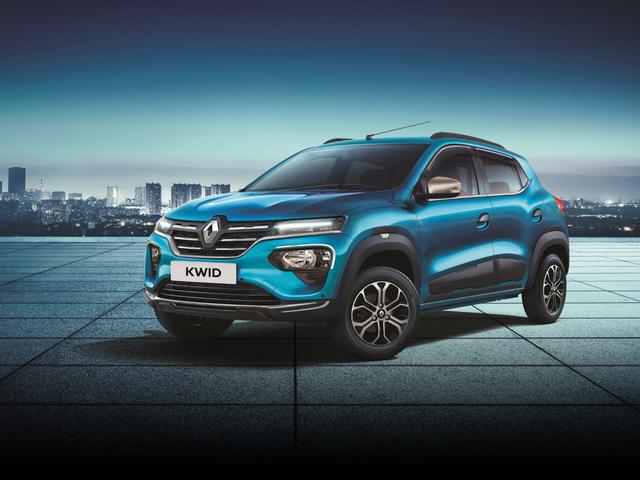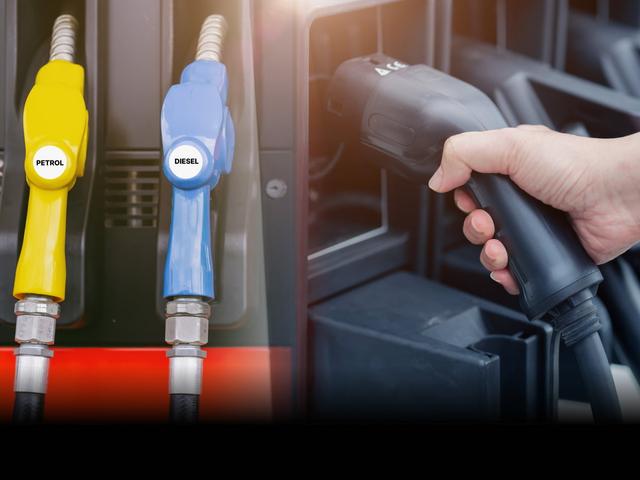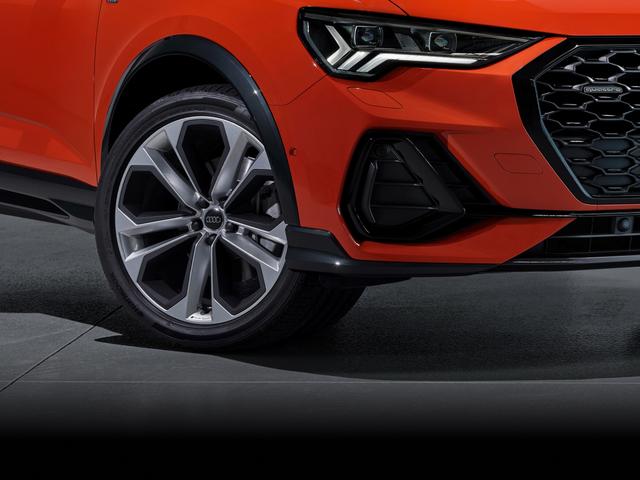


Blink blink !
Its almost here


Evolution of Renault Kwid Across the Years
- 1The Renault Kwid was launched in 2015 and is still in its first generation
- 2Minor feature/safety updates through the years, major facelift in 2019
- 3Now only available with 1-litre 3-cyl engine, with a 5-speed MT or AMT
The Renault Kwid was considered a game changer at its launch in 2015. Nine years later, the Kwid remains an excellent option for the first-time car buyer for its looks, space, ride quality and features on offer.
Over its lifespan, the Kwid has only seen one major facelift and some feature/safety feature upgrades. If you’re considering a new Renault Kwid or even a Kwid on the used car market, here’s how the the Kwid has evolved over the years to help you see if the upgrades will be worth it for you.
The Launch of Renault Kwid (2015)
Boosted by the success of the Renault Duster in 2012, Renault launched the Kwid at ₹2.57 lakh (ex-showroom) in 2015 as its entry to the A-segment market in India. It was Renault’s first made-for-India product, designed to take on compact hatchbacks like the Maruti Suzuki Alto and Hyundai Eon.
Based on the CMF-A platform, the Kwid was designed to appeal to Indian car buyers’ tastes and preferences. Notably, the Kwid was the first compact hatchback to be offered with mini-SUV styling. The Kwid had a baby-Duster look, with its strong fascia, body cladding and high ground clearance.
The Kwid’s dimensions at 3,679mm length, 1,579mm width, 1,478mm height and 2,422mm wheelbase were significantly greater than its direct rivals at the time too. The 180mm ground clearance helped the Kwid stand out as well. The Kwid’s 300-litre boot capacity was the best in class.
Initially, the Kwid was only available with an 800cc engine producing 54 hp and 72 Nm torque mated to a 5-speed manual transmission. The Kwid’s class-leading 660 kg kerb weight made sure performance and fuel efficiency stayed competitive.
Renault’s fuel efficiency claim of 25.17 kmpl for the Kwid certainly helped. The Kwid was available in five variants at launch — Standard, RXE, RXL, RXT and RXT (O).
The Kwid was a huge success for the French carmaker, crossing the 1.75 lakh sales milestone in under two years. Further, the Kwid crossed the 4 lakh sales mark in under six years since debut.
Major Updates Over the Years
The Renault Kwid has soldiered on since 2015 in its first generation form, helped by one major facelift and year-on-year safety/feature updates.
2016: Introduction of 1.0-Litre Version
In 2016, Renault introduced the Kwid with a 1.0-litre, three-cylinder petrol engine. The bigger engine produced 67 hp and 91 Nm torque, but only available as a top variant. The Kwid 1.0L went a long way towards rectifying the issue of lackluster performance that some customers had with the hatchback.
The new larger engine had a claimed fuel efficiency of 23.01 kmpl, only 2 kmpl down from the smaller engine but with better drivability and highway performance.
2016: Structural Reinforcements
The basic version of the Kwid with no airbags initially scored a disappointing GNCAP result in May 2016 — zero stars for adult occupant protection and two stars for child occupant protection. Renault then structurally reinforced the Kwid for better safety.
An updated and more highly specced variant with one driver airbag and seatbelt pretensioners earned one star for adult protection in September 2016.
2016: Introduction of AMT Version
Shortly after the introduction of the 1.0-litre engine, the Kwid was also offered with a 5-speed AMT (Automated Manual Transmission) with the larger engine. The Kwid’s AMT was a fairly basic unit, as it did not feature a creep mode, manual selection of gears or any sort of shift modes.
However, with the cost to upgrade just ₹30,000 over the 1.0L manual, the Kwid AMT was one of the most affordable automatic cars available.
2017: Launch of Kwid Climber
Launched as the top variant with the larger 1.0-litre engine, the Kwid Climber was essentially a cosmetic upgrade. Changes included a new faux skid plate, updated fog lamp surrounds, new six-spoke wheel cover design and orange interior and exterior accents, along with a new electric blue exterior colour.
2019: Major Facelift
Four years after its debut, the Kwid was blessed with its first facelift priced from ₹2.83 lakh ex-showroom. As far as facelifts go, this update was quite substantial. Overall length went up by 52mm thanks to new bumpers and kerb weight was increased thanks to additional structural enhancements.
The biggest difference with the change being the new split headlight treatment, with upper LED DRLs and headlights mounted lower in the bumper. At the rear, the tail light cluster was also revised.
The Kwid’s wheel size was also upgraded from 13- to 14-inch with 165/70 R14 tyres across all models. However, boot space was reduced from 300-litres to 279-litres.

The facelift also brought with it a new instrument cluster, steering wheel and larger 8-inch touchscreen infotainment screen, alongside other minor ergonomic upgrades. ABS, driver side airbag, reverse parking sensors, speed warnings and seatbelt reminders were all standard across models.
2020: BS6 Engine Upgrade
The Renault Kwid’s entire engine lineup was updated to meet BS6 standards. While power output remained the same, the cost of the Kwid was increased by ₹9,000 across the range.
2023: Latest Iteration

Engine Specifications
| Engine | 1.0-litre, 3-cylinder petrol |
| Power | 67 horsepower |
| Transmission | 5-speed manual, 5-speed AMT |
| Efficiency (ARAI) | 21.46-22.3 kmpl |
| Fuel Type | Petrol |
| Body Type | Compact hatchback (A1-segment) |
For 2023, Renault discontinued the 800cc engine, and updated the Kwid 1.0L to comply with BS6 Step 2 emission norms. The Kwid was upgraded with catalytic converters, oxygen sensors and a self-diagnostic device that continually monitors emissions while driving. I
mportantly, all variants were equipped with Electronic Stability Programme (ESP), Traction Control System (TCS) and Tyre Pressure Monitoring System (TPMS), while select variants were also fitted with Hill Start Assist (HSA).
This update also included turn signals incorporated into the ORVMs and steering-mounted audio controls.
Design Evolution
At launch, the Renault Kwid stood out from the crop of A-segment hatchbacks with its high-ground clearance and SUV-inspired styling. The Kwid’s raised hood, large headlights and prominent fog lamps all gave the impression that it was a larger car than its dimensions would suggest.
With the major Kwid facelift in 2019, that design philosophy was made even more sophisticated. The new split DRL and head light treatment looks far more contemporary. The switch to larger wheels and tyres also helped improve the side profile.

On the inside, the Kwid has seen subtle changes to its dashboard layout and design over the years. The biggest changes have been to the instrument cluster, which moved from a simple orange-on-black digital screen to a more comprehensive digital display and redesigned binnacle.
AMT-equipped Kwid models saw the gear selector rotary dial moved to the lower central console. The upper glovebox was removed with the addition of the passenger airbag, while the main glovebox was enlarged.
Technological Advancements
The chief technological advancement to the Renault Kwid over the years has been in the safety equipment it comes standard with. At launch, the Kwid was not offered with ABS, airbags or seatbelt pretensioners.
Currently, the Kwid comes with two airbags standard across the range, ABS standard, ESP, TCS, TPMS, rear parking sensors, seatbelt pretensioners, all seats seatbelt warning, speed warning and more.
Performance and Engine Evolution
The biggest update the Kwid has seen in the engine department is the introduction of the 1.0-litre, three-cylinder petrol engine. Renault used the same 800cc engine, and increased the displacement to 1.0-litre with a larger bore and a longer stroke.
The engine internals were upgraded for reliability. While the 800cc engine was discontinued in 2023, the 1.0-litre was updated to BS6 Step 2.
Impact of Renault Kwid in the Indian Market

The success of the Renault Kwid is commendable for a few reasons: a global manufacturer was able to crack the Indian car market in a competitive segment, Renault had only been in the country independently for four years when the Kwid was launched, Renault succeeded in a segment where buyers are extremely cost-conscious and averse to risks.
The Kwid, with its SUV-inspired styling, arrived at a time when manufacturers were bringing out mildly tweaked versions of their hatchbacks with cladding to appeal to the SUV-aspirations of buyers.
The Kwid seemed like a more authentic mini-SUV, from that point of view and even pre-facelift models are still a good option on the used car market. It can be credited with inspiring Maruti Suzuki to introduce the S-Presso.
Special Editions and Variants

Some of the Kwid special editions and variants include the popular Climber variant that has become a staple of the lineup, while others such as the Kwid Neotech, Kwid Second Anniversary special edition etc were limited-run models.
Most recently, the Renault Kwid was available in a special-edition Night and Day model, with dual-tone white and black exterior, limited to 1,600 units.
Why the Renault Kwid Remains Popular
Over nine years later, the Kwid’s sales are trickling in, as buyers have gravitated towards newer models. Still, considering the Kwid’s facelift in 2019 is itself five years old, Indian buyers still choose the Kwid for its styling, spacious interiors, frugal engine and ride quality.
Conclusion
Not many car models can survive nearly a decade in production in the same generation. In the Kwid’s case, the first-gen model got so many things right, it’s still managing to soldier on. That said, Indian consumers have evolved and seek more in terms of overall fit and finish, NVH, driving characteristics. For the cost-conscious buyer though, the Renault Kwid still presents as a good choice.
Frequently Asked Questions
Expand all

Blink blink !
Its almost here













.jpg&w=640&q=75)









Blink blink !
Its almost here







.webp&w=828&q=75)




